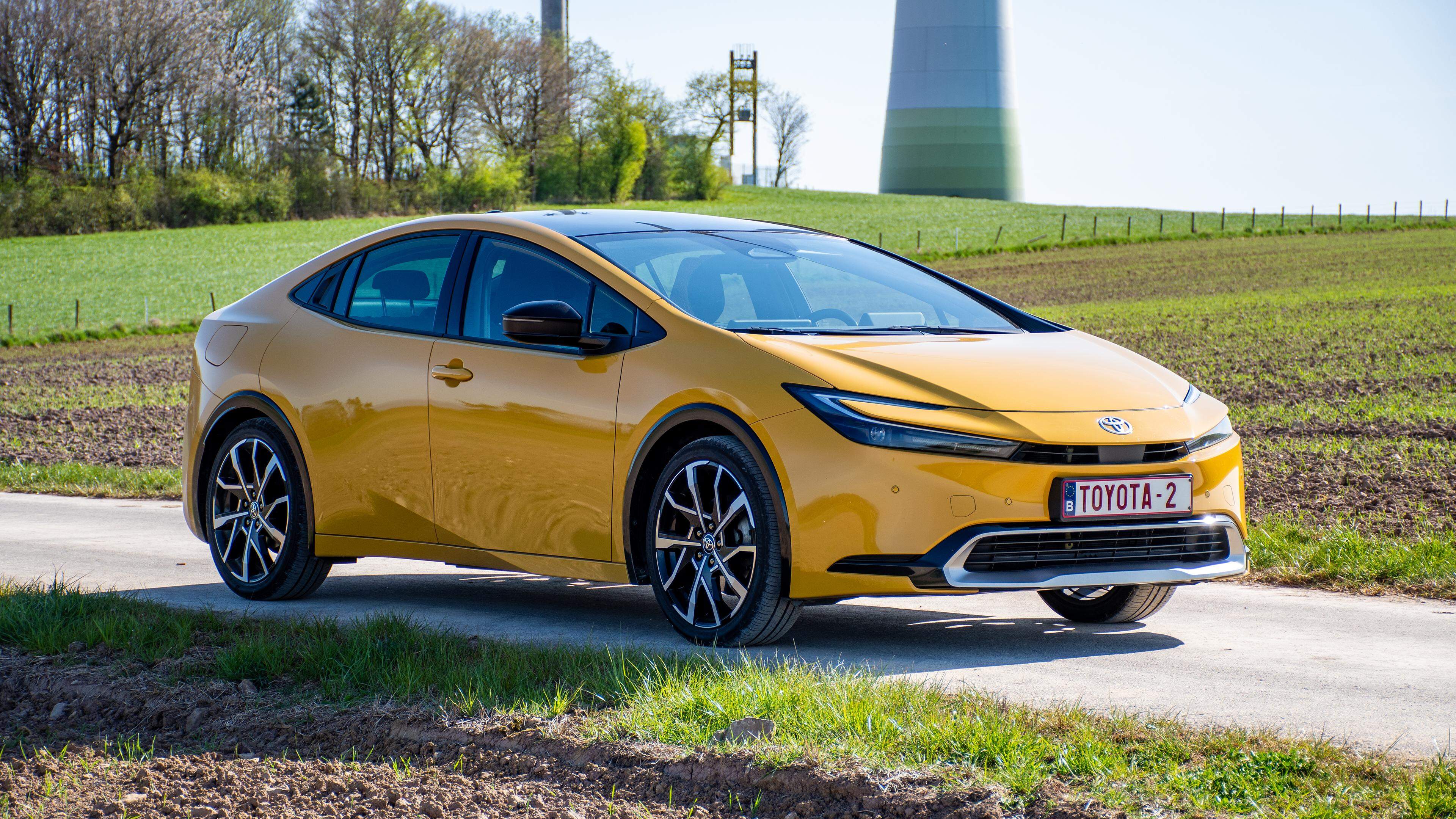The hybrid advance comes back in a sporty look

The Toyota Prius has been one of the most efficient vehicles on the market since its debut in 1997. At that time, aesthetics and sportiness were only a minor matter. However, the currently fifth generation of the Japanese wants to fundamentally change this impression and, under the title « Hybrid Reborn », has a new chapter in the 28-year model history.
Admittedly, the Prius is no longer a brand new model. The Japanese has been available in the Grand Duchy since 2023 and is definitely an underestimated candidate with regard to current discussions about efficient vehicles. In contrast to 1997, hybrid vehicles are no longer uncommon, although the Prius is fairly attributed to a pioneering role. The disadvantage of the pioneering spirit: the competition does not sleep and the hybrid market is competitive. Reason enough to adapt the former revolutionary to the needs of customers. Especially if you do not want to or cannot completely commit e-mobility.
On the outside, the new Prius keeps what he promises and has a pleasant little in common with his predecessors. The characteristic wedge shape and the elegant coupé silhouette convince at first glance and follow a very sporty design language. The front section with the new Toyota hammer shark light signature is also extremely important to the Prius. The Japanese rightly won the « World Car Design of the Year Award » last year. The test car provided by Toyota in the daring “Mustard” yellow also convinces right away and underlines the desired sporty note of the efficiency pioneer.
Solid Toyota experience
In the interior, Toyota-typical is solid. The materials used and the 12.3-inch infotainment display with well-structured menu navigation leave nothing to be desired. The operation of the air conditioning and volume via classic buttons and controller also fits perfectly into the well -thought -out operating concept. With its small diameter, the steering wheel follows the sportiness and scores with a pleasant feel. The 7-inch TFT combination instrument behind is higher and is in the driver’s field of vision. Unfortunately, depending on the steering wheel position, the lower display area is covered. Since the important information is mainly arranged in the upper area, this is not a hindrance in practice.
The digital interior mirror belongs to the standard equipment and offers an improved view of the back at the push of a button – a practical feature, especially when the trunk is fully loaded. The driving assistance systems can be easily adjusted with the controls on the steering wheel and can be selected quickly. In advance, however, the concept of the systems (e.g. LCA stands for lane change assistant) must be dealt with.
The Prius is powered by a 2.0-liter petrol engine with 151 hp and an electric motor with 163 hp, which results in a system output of 223 hp. Compared to the previous model, this means an increase of 101 hp and increases the expectations of the advertised sportiness. The noticeable development of the hybrid system is particularly gratifying: the new electric motor not only delivers significantly more power than before, but even exceeds that of the combustion engine. As a result, the Prius succeeds in dealing with many driving situations purely electrically and noiselessly. The petrol engine often stays in the background in everyday life and is only switched on when the performance call is stronger, which significantly improves driving comfort. Situations in which the engine cries out under high load rarely occur.
When driving, the increased system performance can be clearly felt in almost every location. The sprint at 100 km/h succeeds in 6.8 seconds, overtaking the Prius masters playfully. This should only be planned for ahead in purely electrical driving mode, since the electric motor is settled at 135 km/h and the intermediate sprint is rather behavior when the country street pace is rather behavior. However, the driver can actively intervene in the operating strategy of the hybrid system and determine how and whether burners and electric motor should work together at the push of a button. Energy recovery can also be regulated in three stages, which enables comfortable one-pedal driving.
Electrical range of around 70 kilometers
Toyota specifies an electrically operated range of up to 86 kilometers, whereby this value must be corrected to about 70 kilometers in practice. Nevertheless, the Prius is very efficient in this regard, since it offers a good reach even in realistic conditions. The average consumption of 1.1 liters achieved should be emphasized, but the prerequisite of which is a regular battery charge. As soon as the battery is exhausted, the consumption is still at a level of only 4.7 liters of super petrol-a pleasant value that makes the Japanese a usual efficient vehicle and enables a combustion range of almost 900 kilometers.
The current Prius presents itself with a noticeably increased performance, a higher proportion of purely electrical driving and a particularly running and efficient four-cylinder petrol engine. Fortunately, the advertised sportiness does without a hard -coordinated chassis and bumps are comfortably absorbed. The driving stability of the Japanese can also convince: in dynamic situations, the vehicle remains precisely on track and generally behaves very balanced and always easy to control.
Elektro vs. Hybrid – Which Cupra wins the internal drive duel?
The Toyota Prius has developed with the fifth generation and is now presenting itself as an efficient vehicle that also follows a sporting approach. With its system output of 223 hp and an electrical range of real 70 kilometers, the Japanese offers a convincing mix of everyday suitability and driving pleasure. With an entry -level price of 48,340 euros and seven available colors, the Prius also offers an individual choice.
The test car was made available to the editorial team by the manufacturer for a limited period of time.
Newsletter: Everything about car and traffic
Every two weeks, every Wednesday, news and information about car and traffic in the newsletter.
You can unsubscribe at any time if you want that. You can find more information in our Data protection guideline.








